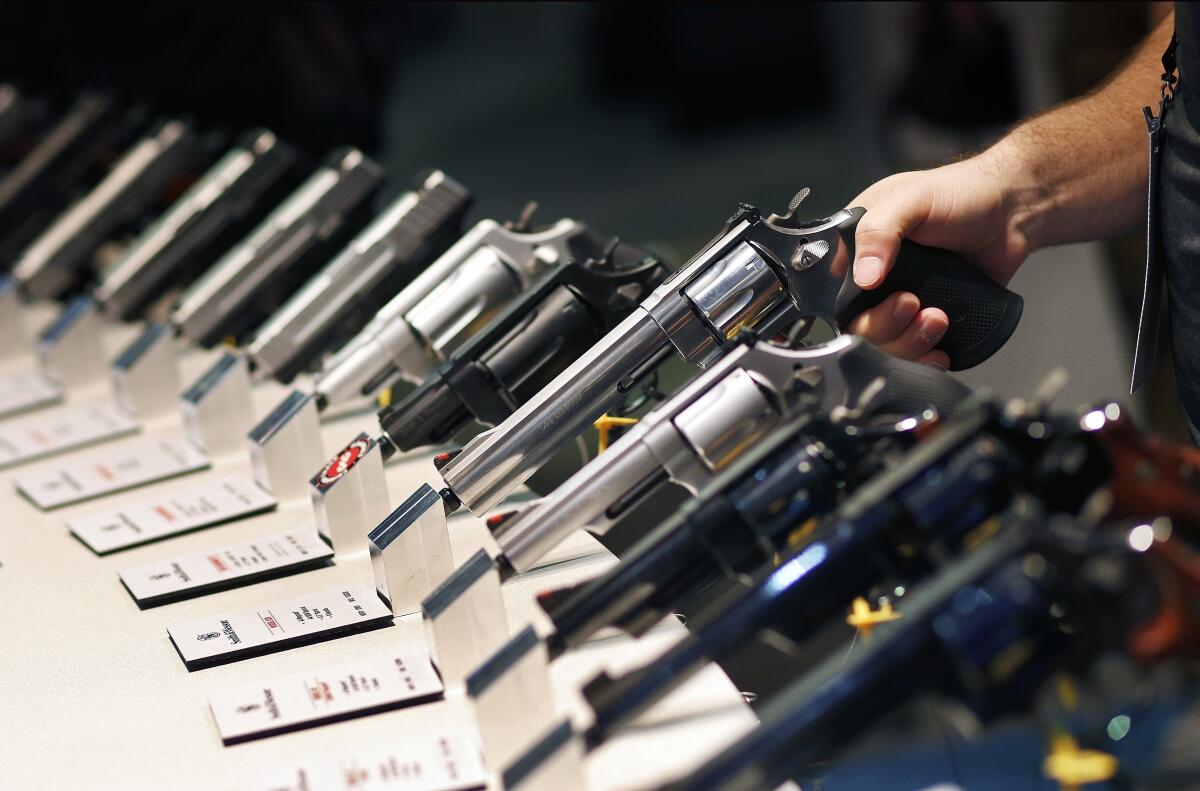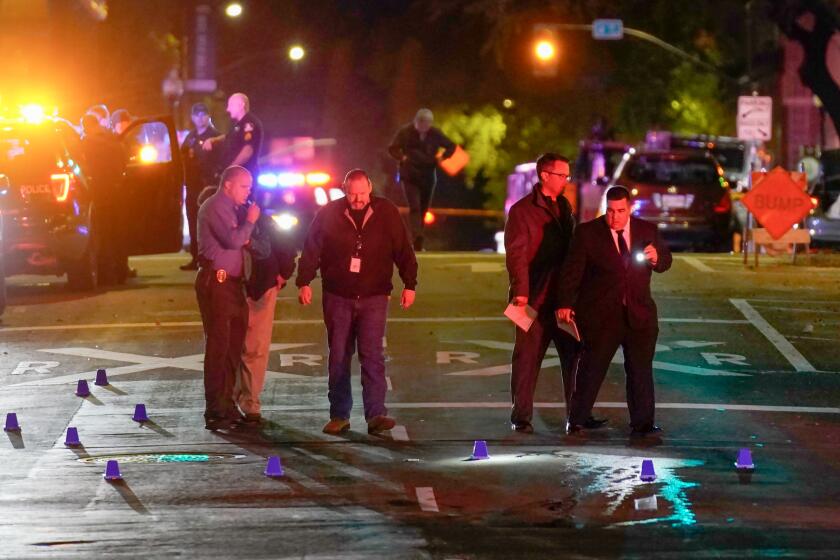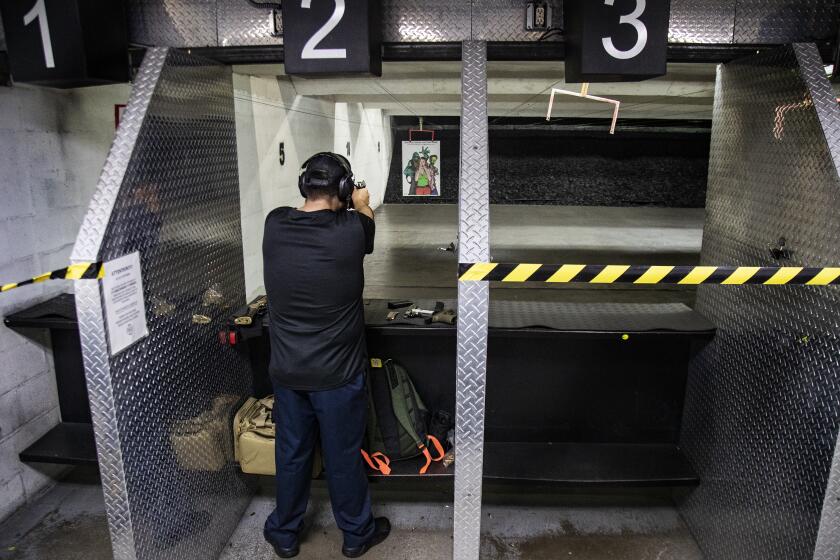California adults who live with a gun owner face twice the risk of death by homicide

It is a belief that helped drive a historic rise in U.S. firearms sales and first-time gun owners during the COVID-19 pandemic: Having a handgun at home for personal protection will make you safer.
Groundbreaking new research conducted over a 12-year period in California shows that the opposite is true.
Between October 2004 and the end of 2016, adults in the state who didn’t own a gun but took up residence with someone who did were much more likely to die a violent death than people in households without a handgun, researchers from Stanford University found.
Those who lived with a handgun owner were almost twice as likely to die by homicide as their neighbors without guns, the researchers found. More specifically, adults who lived with the owner of a handgun were almost three times more likely to be killed with a firearm than Californians in households where no handguns were present.
In addition, people who lived with a gun owner and were killed in their homes were especially likely to die at the hands of a spouse or other intimate partner. Among the 866 homicide victims who died in their homes during the period studied, cohabitants of handgun owners were seven times more likely than adults from gun-free homes to have been killed by someone who ostensibly loved them.
More guns, including assault weapons, are on the street, as the mass shooting in Sacramento reveals all too brutally.
Rendered into the statistics of public health, the findings suggest that for every 100,000 unarmed adults whose cohabitant acquired a handgun, 4.03 more were killed by a firearm in the ensuing five years than would have been if their households had remained gun-free.
The study was published Monday in the journal Annals of Internal Medicine.
The risk of living with a gun owner overwhelmingly falls on women, said study leader David M. Studdert, a professor of law and health policy at Stanford. Almost 85% of the homicide victims living with handgun owners were women, he said.
Children also bear a disproportionate share of risks that come with living in households with firearm owners, but their deaths were not tallied in this study, Studdert said.
The research comes amid a steep rise in gun sales, spurred by anxieties around crime, racial discord and a pandemic that has killed close to a million Americans and laid bare dire inequities in healthcare.
About 110,000 Californians have purchased a firearm since the start of the COVID-19 pandemic, including about 47,000 first-time gun owners, a survey finds.
In a 2015 survey, researchers from Harvard University found that the stock of handguns in American homes had nearly doubled from 65 million in the mid-1990s to 113 million in 2015. Among handgun owners, 2 out of 3 cited self-defense as a primary motivation for their decision to keep a firearm.
A study published in February found that between Jan. 1, 2019, and late April 2021 — a period marked by pandemic lockdowns and nationwide protests touched off by the May 2020 murder of George Floyd by Minneapolis police officers — roughly 7.5 million new firearms were purchased. That shopping spree created an estimated 5.4 million new gun-owning households in the United States and exposed more than 11 million household members — including 5 million children — to the risks of living with a gun.
Indeed, as historically low crime rates began to tick up during the pandemic, Americans raced to buy handguns with an eye toward protecting themselves and their families, Studdert said. Despite clear evidence that rates of suicide and firearms accidents are higher in households with guns, the narrative that guns protect households in other ways has gained traction in the United States.
But that’s wrong too, he said.
“People living with gun owners showed no evidence of lower rates of fatal assault by strangers,” Studdert said. “That suggests there is no protective effect of a gun against intruders. We just didn’t see that.”
It was the kind of imperious broadside that would strike fear into the hearts of most politicians.
Many adults know that having a handgun in the home increases the risk that a troubled adolescent might use the weapon to commit suicide, Studdert said. They realize that a curious child could seek out the weapon for play, with disastrous results.
But many of those adults appear to believe that the same gun will ward off robbers, rapists and other trespassers and protect family members from harm, he added.
“You might say that’s worthwhile tradeoff, but we don’t see that protection,” he said. “There were no protective benefits of any kind that we could detect in this study.”
The authors of the new report stress that, like the smoke of a tobacco user, the risk of living with a gun spreads beyond the person who voluntarily takes on the risk. Making that parallel clear, they called the heightened odds of violent death for those who don’t own guns the “secondhand risks” of gun ownership.
David Hemenway, an injury-prevention researcher at Harvard University, said the analogy is no accident.
As efforts to capture and limit the harm of tobacco escalated at the end of the last century, it was the notion of “third-party effects” that moved the needle, Hemenway said.
The doctors who lead the medical profession’s debates on how best to preserve and restore our health are done with moments of silence in the face of gun-related violence.
Hemenway called the new study “really important” and pathbreaking in its use of public records to track the whereabouts and well-being of very large populations over a long period. The Stanford team linked gun purchase documents to public voting records, which include the residences of more than 17 million Californians. Those, in turn, were checked against death records and medical examiners’ reports.
“This is like something that’s virtually never done in injury prevention: You have these millions of people, and you follow them year after year after year,” Hemenway said. California, with its strict gun-purchasing laws and careful record-keeping of gun ownership, “is one of the few states” where a study like this could be pulled off and have national implications, he said.
Much more will be learned from the data assembled for this study, he added.
“You watch: Over the next few years, there’s going to be so many additional, incredibly important studies coming out of California on issues of guns and death,” he said. “Once there’s a good data set, researchers are like moths to a flame.”









